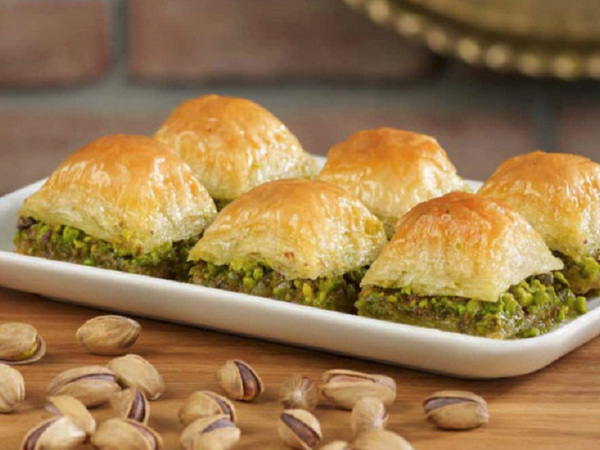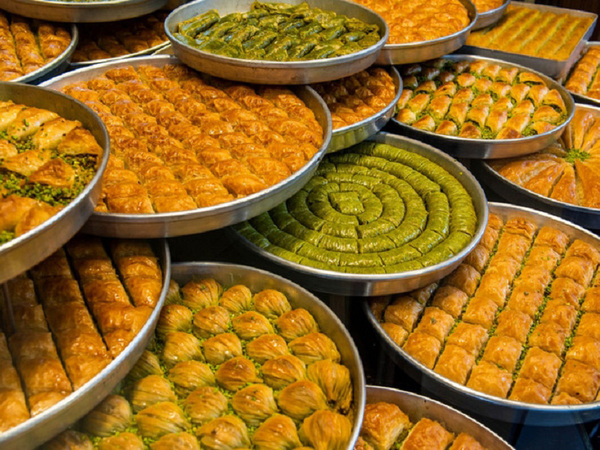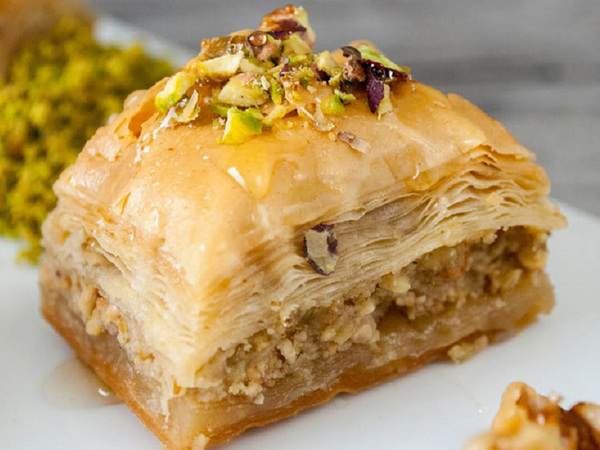Baklava, a delectable pastry consisting of layers of flaky phyllo dough, chopped nuts, and sweet syrup, is a beloved dessert in many cultures. While it's often associated with Greece and Turkey, the true origins of baklava are a subject of debate and intrigue. In this article, we will delve into the history of baklava, exploring its roots in ancient Assyria and its evolution through Greek and Turkish influences.
Ancient Assyrian Origins
To comprehend the history of baklava, we must venture back to ancient Assyria, where the first traces of layered pastry with nuts and honey were discovered. Assyrians are believed to have created a similar dessert called "multilayered bread" as early as the 8th century BC. These early pastries were made with unleavened dough and filled with chopped nuts, then sweetened with honey, making them precursors to what we now know as baklava.
The Assyrians' advanced culinary skills and trade routes allowed this delectable treat to spread across the ancient world, influencing neighboring cultures like the Greeks and Persians.

Greek Influence and Evolution
The Greek connection to baklava is often cited as a crucial chapter in its history. Greeks have embraced baklava as a beloved dessert for centuries, and it has become a staple of Greek cuisine.
The Byzantine Empire, a continuation of the Eastern Roman Empire, played a pivotal role in shaping baklava as we know it today. Greeks refined the recipe by introducing thinner layers of dough, which evolved into the delicate phyllo dough used in modern baklava. Additionally, they began to incorporate local ingredients such as walnuts, almonds, and pistachios, adding complexity to the flavor profile.
The term "baklava" itself has Greek origins. It's derived from the Greek word "βακλαβάς" (baklavas), which refers to a sweet pastry. This etymological connection underscores the strong Greek association with baklava.

Turkish Influence and the Spread of Baklava
During the Ottoman Empire's expansion into Greece and the Balkans in the 15th century, baklava underwent further changes and adaptations. The Ottomans introduced their own variations of the pastry and played a significant role in popularizing it throughout their empire, which extended from Southeast Europe to the Middle East.
Under Ottoman rule, baklava became a symbol of celebration, served at weddings, religious holidays, and special occasions. The Ottomans further refined the recipe, incorporating the use of pistachios and hazelnuts, which remain common ingredients in modern baklava.
The renowned Turkish city of Gaziantep is often considered the heartland of baklava production. Gaziantep's baklava makers have honed their craft for generations, passing down their techniques and recipes to preserve the traditional art of making baklava.

Greek-Turkish Culinary Overlap
The intertwined histories of Greece and Turkey have resulted in a shared culinary heritage, and baklava is a prime example of this overlap. Both Greek and Turkish cuisines boast their own versions of baklava, showcasing slight variations in preparation, choice of nuts, and syrup composition.
Greek baklava is known for its use of walnuts or almonds and is typically sweetened with a syrup made from sugar, water, and lemon juice. In contrast, Turkish baklava often features pistachios and employs a sugar syrup infused with rosewater or orange blossom water, lending it a distinct floral aroma.
Despite these differences, both variations of baklava have found their place on tables around the world, each with its unique flavor and cultural significance.

The Multifaceted History of Baklava
The history of baklava is a testament to the dynamic nature of culinary traditions, reflecting the ebb and flow of cultures and civilizations over time.
Whether you enjoy Greek baklava with its warm, cinnamon - spiced aroma or the fragrant, pistachio - filled Turkish variety, it's important to appreciate the shared history and craftsmanship that have made this delightful pastry a global sensation.
In the end, baklava's true origins may be shrouded in history, but its enduring popularity and deliciousness are undeniable, transcending borders and uniting people in their love for this sweet and flaky treat. So, the next time you savor a piece of baklava, remember the rich and diverse history that has brought this dessert to your plate.